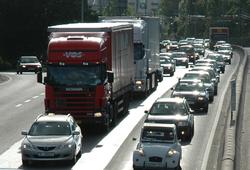 Researchers at TØI has studied and summarized the effects and experiences of measures that contribute to reduced greenhouse gas emissions in a number of cities across Europe.
Researchers at TØI has studied and summarized the effects and experiences of measures that contribute to reduced greenhouse gas emissions in a number of cities across Europe.
The study suggests that a number of measures must be implemented to reduce greenhouse emission. Some of the most effective measures are more coordinated municipal purchasing and consolidation center(s) dedicated for deliveries to specific zones in the city coupled with requirements on use of environmentally friendly goods vehicles. This means that electric vehicles or freight bikes, trucks with Euro VI engine or alternative fuel should be used for last mile distribution.
The municipality can contribute to reduced emissions by combining their own purchases and shift to electric or Euro VI vehicles in their own vehicle fleet. Other measures contributing to reduced emissions are zero-emission zones, increased number of filling stations for alternative fuels, increased number of loading- unloading bays and increased use of evening and night deliveries. Collection points for e-commerce deliveries and use of ITS with real-time information on traffic and infrastructure are other solutions that provide significant effects.
In the past few years it has become more common to accomplish small-scale experiments to test the effects of appropriate measures rather than immediately full scale implementation. Results from the analysis will contribute to a Sustainable Urban Logistics Plan (SULP) for Oslo.





